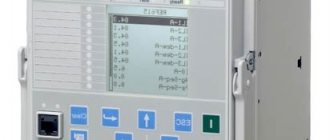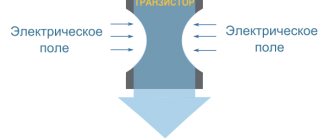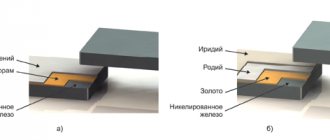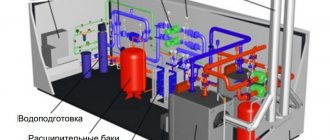It is difficult for a modern person to imagine his life without electrical appliances. They make our lives easier, eliminate routine tasks, and add comfort. We are so used to them that sometimes we forget about basic safety rules. And this can lead to dire consequences.
It is necessary not only to follow the safety rules when using devices, but also to teach this to children.
When using electrical equipment, pay attention to the following points:
Wiring
The most important safety condition is the integrity of the electrical cable.
It is forbidden:
- Paint or bleach the wire
- Use it as a clothesline if it's plugged in
- Hide the cable behind water and gas pipes, heating appliances
- Allow electrical wiring to come into contact with telephone, broadcast or antenna cables, plant branches, roofs and walls of buildings
- Hammer nails, dowels, screws and other elements into the wall where the wiring passes
If you find any damage to the electrical wiring, contact a professional electrician.
Occupational Safety and Health
Labor protection instructions for workers using electrical appliances
1. General safety requirements
1.1. For the use of electrical installations by electrical consumers
energy (electrical appliances) (air conditioners, fans, electric heating appliances, lamps, refrigerators, stabilizers, transformers, communications equipment, other types of electrical energy consumers) employees of the enterprise are admitted after an introductory, initial briefing on labor protection issues, studying the procedure and rules for using electrical appliances provided for operational documentation and testing knowledge on electrical safety issues.
1.2. Users of electrical appliances must have 1 qualification group in electrical safety, undergo an annual test of knowledge of safe methods of working with electrical appliances, once every six months - instructions on labor protection issues, comply with the electrical safety requirements set out in this manual and the operational documentation for the electrical appliances used, instructions from the Chief Power Engineer issues of electrical safety and the procedure for consuming electricity, have knowledge and skills in providing first aid in case of electric shock, and be able to use primary fire extinguishing equipment.
1.3. Maintenance and repair of electrical appliances must be carried out by trained and certified electrical personnel of the chief power engineer's department with a qualification group for electrical safety of at least 2 or a specialized operating organization (under contract) entitled to carry out this work.
1.4. Employees of the enterprise authorized to use electrical appliances are obliged to:
1.4.1. while working, moving around the territory of the enterprise (branch, department), in office premises, on flights of stairs and in corridors, as well as in other places of work, be especially attentive and cautious, take care of personal safety and health, as well as the safety and health of others people in the process of performing any work while staying on the territory of the enterprise (branch, department);
1.4.2. in winter, be careful and attentive on icy sidewalks and stairs;
1.4.3. perform only the assigned work in the manner specified by the work supervisor; in doubtful cases, contact your supervisor for clarification;
1.4.4. follow the internal labor regulations of the bank and the daily instructions of the work manager;
1.4.5. remember personal responsibility for compliance with labor protection rules and for the safety of other workers;
1.4.6. be attentive while working, not be distracted by extraneous activities and conversations and not distract others;
1.4.7. use the issued protective clothing, safety footwear and personal protective equipment;
1.4.8. pay attention to signs, inscriptions warning of danger and comply with them;
1.4.9. ensure that the floor in the workplace is level and non-slip, all hatches, trenches, and pits are closed or fenced;
1.4.10. noticing a violation of safety rules by another employee or a danger to others, warn the employee and manager about the need to comply with requirements that ensure labor safety;
1.4.11. know the locations of fire extinguishing equipment and be able to use them, as well as know the storage locations of first aid kits and be able to use them.
1.5. To avoid accidents, fires, and failure of electrical installations, users of electrical appliances are PROHIBITED from:
1.5.1. independently open and repair electrical appliances, the electrical network (wiring, sockets, switches, plugs, etc.), as well as replace light bulbs, fuses and other removable elements, turn off and on circuit breakers in electrical panels (except in emergency situations; see . clause 4.1.);
1.5.2. use faulty electrical appliances, sockets, plugs, switches, and other switching devices;
1.5.3. include electrical appliances with disabled or faulty automation (locking) and alarm systems into the electrical network and operation;
1.5.4. use non-standard electrical equipment (homemade electric heating devices, fuses, substitute plugs, sockets, switches, etc.);
1.5.5. include powerful consumers of electrical energy (heating devices, welding machines, etc.) into the power grid without the permission of the Chief Power Engineer of the enterprise or the person responsible for electrical facilities in the branches and departments of the enterprise;
1.5.6. connect powerful consumers of electrical energy (air conditioners, heating devices, welding machines, etc.) to the electrical network (socket) intended for computer equipment;
1.5.7. connect electrical appliances to the network if there is moisture in them (on them) and damage to the insulation of current-carrying wires (cables).
1.5.8. connect and disconnect plug sockets (connections) when electrical appliances are connected to the network;
1.5.9. remove warning signs (posters) from electrical distribution panels, open them without permission and turn them on or switch;
1.5.10. touch with your hands simultaneously an electrical appliance connected to the network and devices that have natural grounding (radiators, heating pipes, water pipes, gas stoves, etc.);
1.5.11. operate electrical appliances without special protective design (grounding, sealed, dust-moisture-proof, explosion-proof housing) in rooms with one of the following conditions: dampness (humidity more than 75%, ceiling, walls, floor, objects covered with moisture), conductive dust, chemically active environment (vapors, gases, deposits of which destroy insulation and live parts of electrical equipment), conductive floors (metal, earthen, reinforced concrete, etc.);
1.5.12. use portable lamps with a voltage above 42 V in rooms with increased danger (humidity above 75%, conductive floors and dust, temperatures above 35 degrees);
1.5.13. use portable lamps with a voltage above 12 V in rooms with particularly hazardous conditions (presence of moisture on the ceiling, walls, floors, objects, chemically active vapors, gases, two or more conditions of increased danger at the same time);
1.5.14. operate without protective casings (fences) electrical appliances that have rotating parts, uninsulated current-carrying elements that are energized;
1.5.15. touch live wires (cables) with your hands or other open areas of the body, place any objects on them and electrical appliances, stand on them;
1.5.16. allow electrical wires to come into contact with metal structures and flammable materials;
1.5.17. use stationary lamps as hand-held portable lamps;
1.5.18. tie and twist electrical wires, pull wires and lamps, hang lamps on electrical wires;
1.5.19. use electrical fittings for hanging clothes and other items;
1.5.20. wrap electric lamps (luminaires) with paper, cloth and other flammable materials;
1.5.21. install lamps and heating electrical appliances at a distance of less than 0.5 m from combustible materials;
1.5.22. use radio and telephone wires in electrical networks;
1.5.23. put electric heating devices in cabinets until they cool completely;
1.5.24. use electric heating devices without heat-insulating supports (devices);
1.5.25. dry clothes or other flammable materials on or near electrical heating devices;
1.5.26. store in a room where electric heating devices, flammable substances and materials are installed.
1.6. Electrical appliances installed in rooms with high humidity, the presence of conductive floors and dust, a chemically active environment, having non-insulated conductive housings, can be connected to the electrical network only if there is grounding. The use of heating, water supply and other pipes or structures as grounding is not allowed.
1.7. When installing electrical appliances in close proximity to devices that have natural grounding (radiators and heating pipes, other pipes and structures), these devices must be fenced with insulating grilles (wooden, etc.).
2. Safety requirements before putting the electrical device into operation
2.1. Before connecting the electrical device to the network, carry out an external visual inspection of all equipment and make sure that the device is securely installed, the integrity of the connecting wires, plugs, sockets, the initial position of the controls, that there is no damage to the insulation of the connecting and supply wires (cables) and other external elements of the device.
If grounding is provided for operation of the device, make sure that the grounding conductor is intact and is securely attached to the grounding bus. When using grounding-type plugs and outlets, make sure the plug is connected to an outlet that has a grounding connection.
2.2. Connect the electrical device to the network and carry out work in accordance with the instructions in the operational documentation for the electrical device (passports, operating manuals (instructions), etc.).
3. Safety requirements during operation of the electrical appliance
3.1. After putting the electrical device into operation, make sure that it is functioning in accordance with the operating documentation.
3.2. During operation of the electrical appliance, follow the instructions in the operating documentation for the electrical appliance (time of continuous operation, breaks, etc.).
4. Safety requirements in emergency situations
4.1. If there are signs of a short circuit in the electrical wiring to the housing, spontaneous combustion of electrical equipment or electrical wiring, a sudden power outage in the network, malfunctions in electrical equipment, deviations from the operating mode of electrical equipment specified in the operational documentation, it is necessary to immediately disconnect the electrical equipment from the electrical network and de-energize (if necessary) the electrical wiring of the room with a switch in the electrical panel, report the incident to the head of the department (work) and the Chief Power Engineer (the person responsible for electrical equipment).
Restarting the electrical equipment is permitted only after all the reasons that caused the need to disconnect the electrical equipment have been eliminated.
4.2. If a fire occurs in electrical equipment or the electrical network, it is necessary to perform all the actions specified in clause 4.1, and also inform the facility security post about the location and nature of the fire to call (if necessary) the fire brigade and begin extinguishing the fire using the primary fire extinguishing equipment available nearby.
The use of water and foam fire extinguishing agents in rooms with an unpowered electrical network is not permitted.
5. Safety requirements upon completion of work
5.1. Disconnect electrical equipment from the network in accordance with the instructions of the operational documentation (passport, operating manual (instructions), etc.).
5.2. Before leaving the workplace (premises), make sure that all electrical appliances are turned off.
Developed by:____________
Agreed:____________
Consequences of defeat
The result of the current depends on its voltage and magnitude, duration and frequency, path, as well as the general condition of the body. According to studies, 1 mA is considered perceptible (threshold). As the current increases, painful muscle contractions appear. When a current of 12-15 mA passes, a person loses the ability to control his muscles and cannot tear himself away from the damaging source on his own. Such discharges are called non-releasing discharges. With a subsequent increase in current, there is a high probability of cardiac fibrillation (convulsive contraction). A discharge of 100 mA is considered fatal.
Fire Prevention
Safety precautions when working with electrical equipment include requirements for the tools used. In particular, it is prohibited to use steel hacksaws, rulers and other devices that can accidentally cause a short circuit. Tool handles must be securely insulated. The troubleshooter must stand on a non-conductive base. Similar requirements are provided for by safety precautions when installing electrical equipment.
Providing protection
All activities, including testing of electrical equipment, are carried out in accordance with the requirements of the relevant sanitary rules and regulations, which are approved by the deputy. chief sanitary doctor and GOST. According to these standards, the intensity of the magnetic field should not be greater than:
- for the electrical component in the frequency range 100 kHz-30 MHz – 20 V/m, 30-300 MHz – 5 V/m;
- for the magnetic component in the range of 100 kHz–1.5 MHz – 5 A/m.
The intensity of the electromagnetic field is measured using the IEMP-1 device. Functioning generators must be placed in special rooms. It is allowed to place HF installations intended for heating dielectrics and metals in general production workshops. In this case, certain conditions must be met. In particular, workplaces must ensure maximum permissible radiation levels and exclude exposure of persons who do not service these units. During the heat treatment of dielectrics and metals, it is necessary to equip exhaust ventilation. Air intakes must be made of non-magnetic materials to prevent them from being heated by RF currents.
Changing fuse inserts
Safety precautions when working with electrical equipment contain a requirement according to which the replacement of burnt-out elements is carried out when the voltage is removed. If it is impossible to ensure the fulfillment of this condition in exceptional situations, it is allowed to carry out actions with the load disconnected. The danger in this case is that during the replacement process the fuse insert may burn out (especially in the event of a short circuit). In this case, there is a risk of arcing. This operation is performed using insulating pliers. In this case, your hands should be wearing dielectric gloves, and your eyes should be protected with special goggles.
Safety precautions when working with electrical equipment
The main point is that servicing the devices should only be carried out by specialists who have undergone special training. Mechanics or electricians for the repair and maintenance of electrical devices are allowed to interact with such devices only if they have a good level of knowledge of PTE and PTB, which is confirmed by the results of the qualification commission. As for all other specialists, they can work with units only under the supervision of responsible persons. At the same time, it is important for personnel of any skill level to have knowledge of identifying electrical safety signs.










